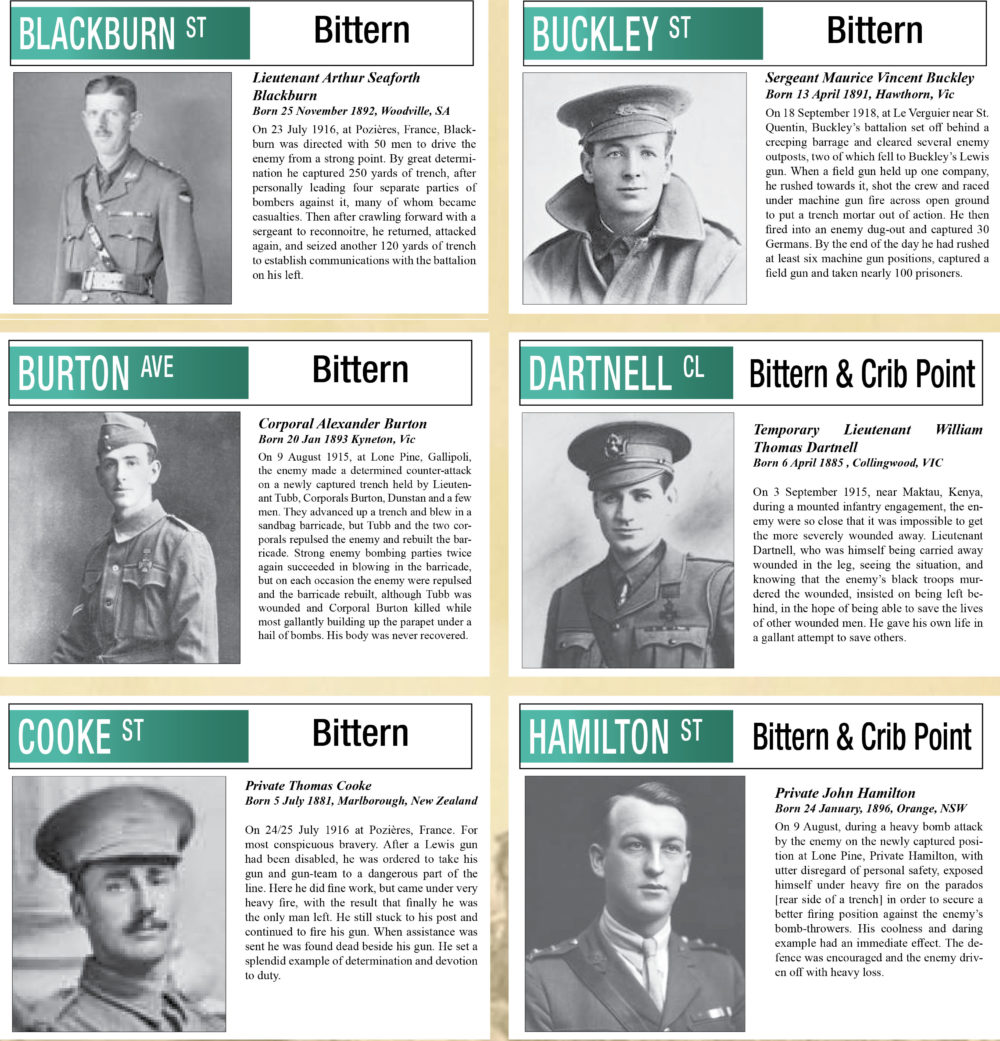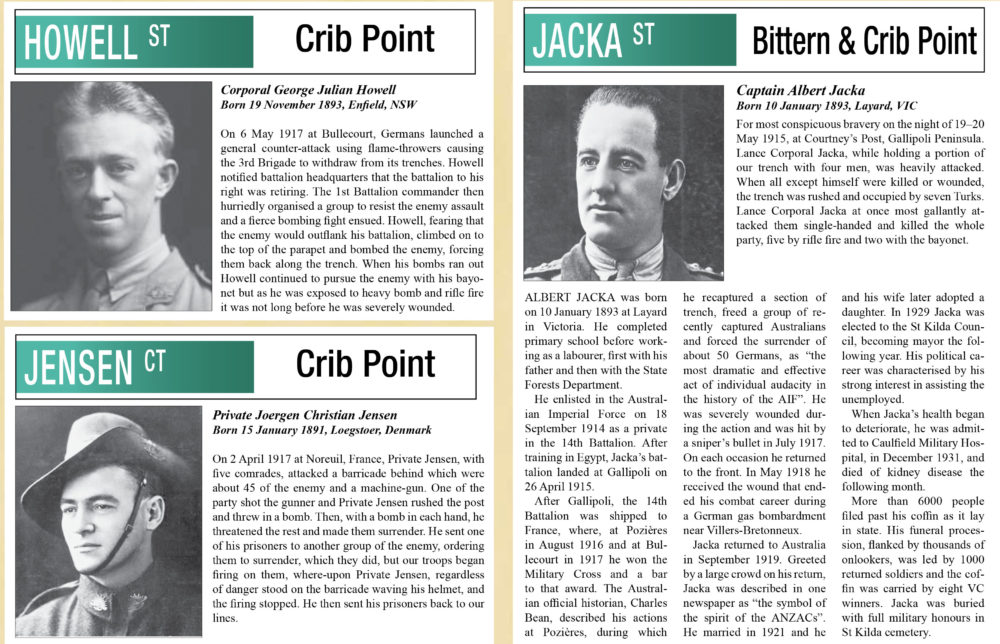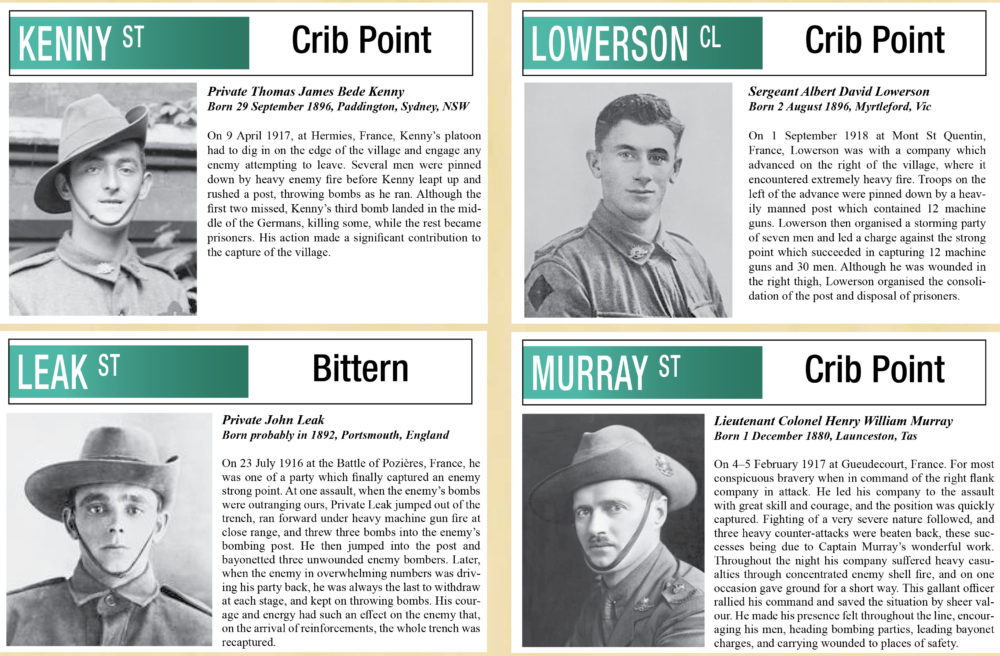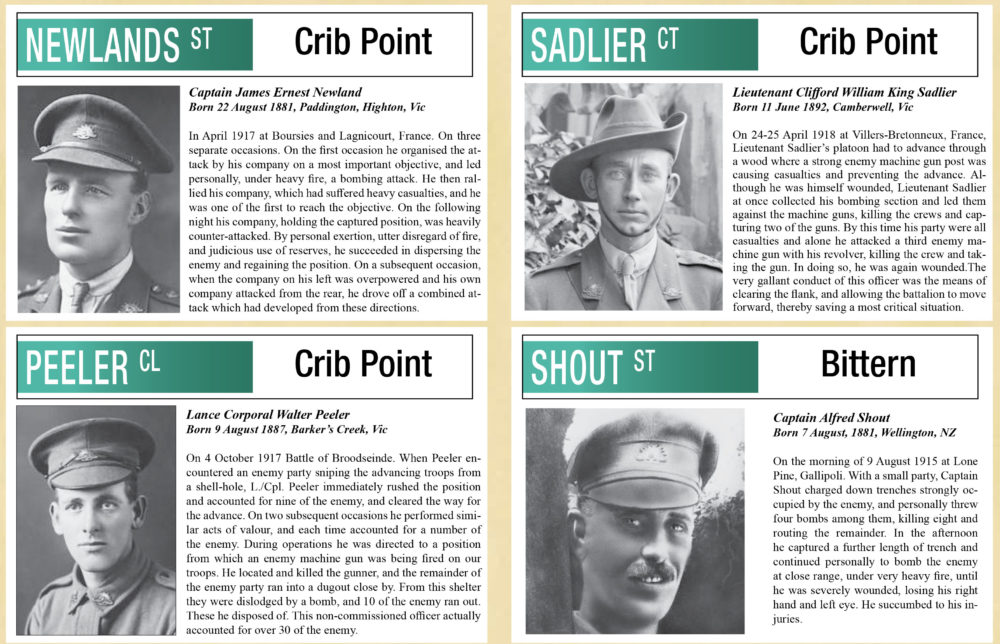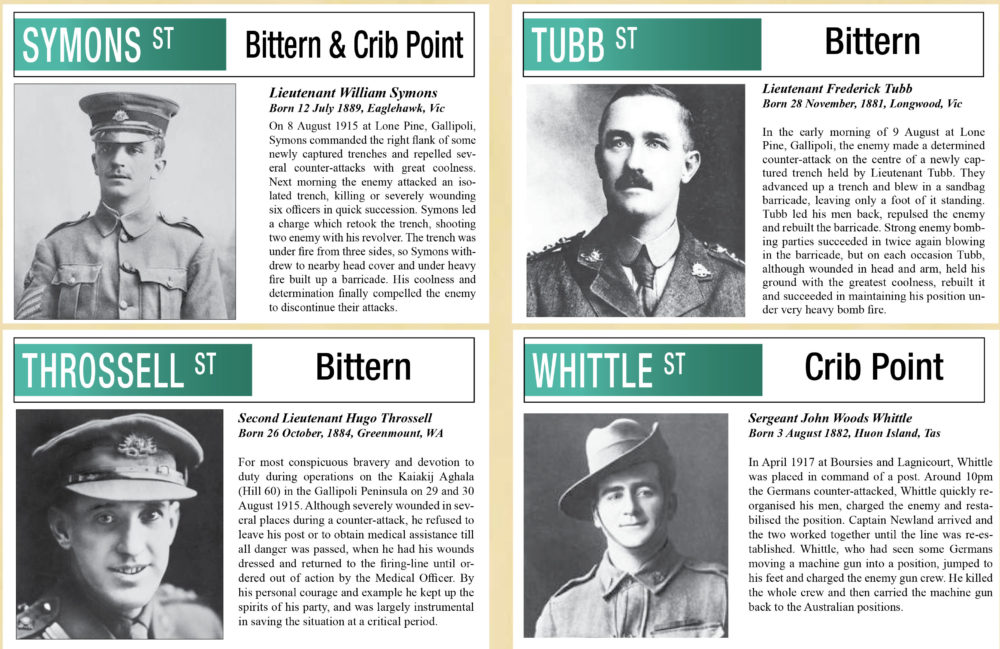WHILE not a great deal is known about the development of Bittern and Crib Point, it is obvious that the area was subdivided after the First World War.
The developers sought to honour those who had served in the war by the names they gave the streets and troads.
Many streets in the two towns are named after Victoria Cross recipients, which was done to honour their sacrifice in the “Great War”.
The Victoria Cross is the highest military decoration and is awarded for valour “in the face of the enemy” to members of the armed forces of various Commonwealth countries, and previous British Empire territories.
It takes precedence over all other orders, decorations and medals. It may be awarded to a person of any rank in any service and to civilians under military command.
In the United Kingdom, it is usually presented to the recipient or to their next of kin by the British monarch at an investiture held at Buckingham Palace.
In countries other than Britain where the monarch is the head of state, the Governor-General usually presents the medal.
The VC was introduced on 29 January 1856 by Queen Victoria to honour acts of valour during the Crimean War.
Since then, the medal has been awarded 1356 times to 1353 individuals. Only 13 medals – nine to members of the British Army, and four to the Australian Army – have been awarded since the Second World War.
The traditional explanation of the source of the gunmetal from which the medals are struck is that it derives from Russian cannons captured at the siege of Sevastopol.
Recent research has thrown doubt on this story, suggesting a variety of origins for the material from which the medals are made.
A single company of jewellers, Hancocks of London, has been responsible for the production of every Victoria Cross awarded since its inception
Due to its rarity, the VC is highly prized.
Listed on below are 21 streets in Bittern and Crib Point named after Victoria Cross winners and a brief biography.



